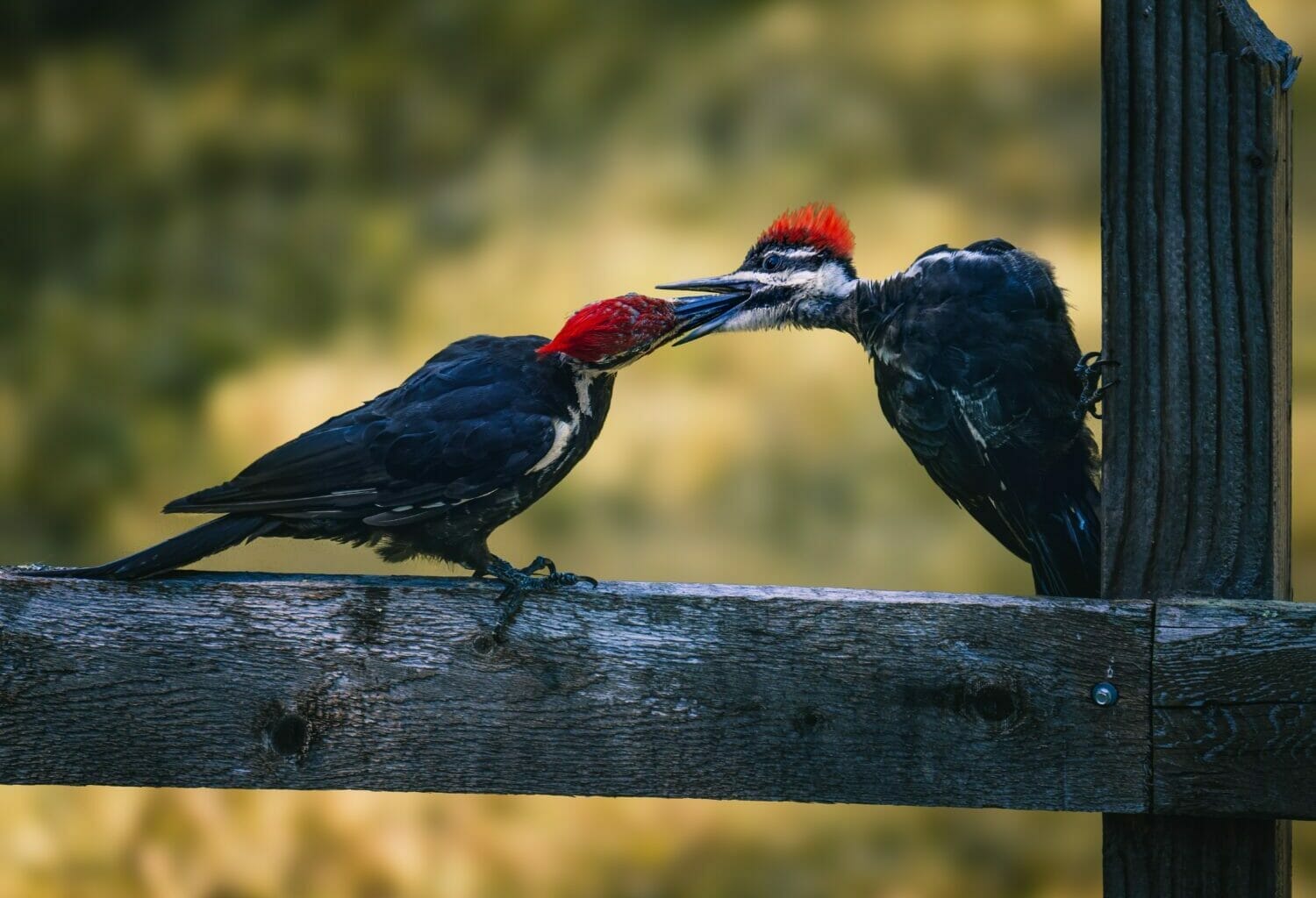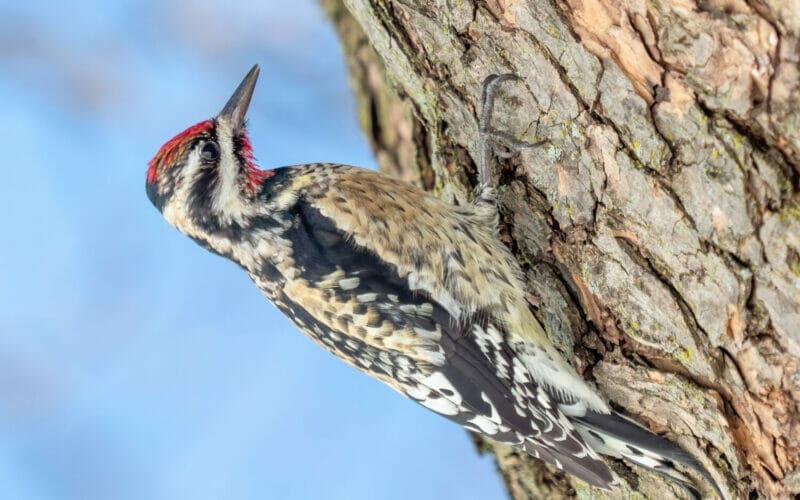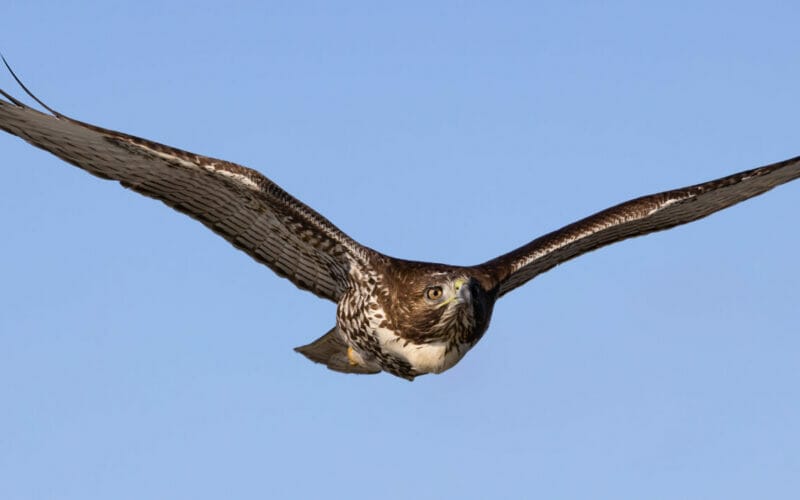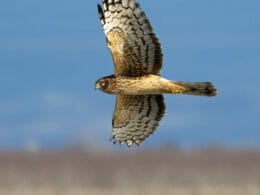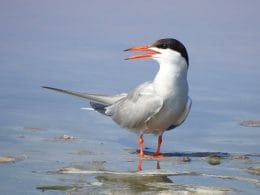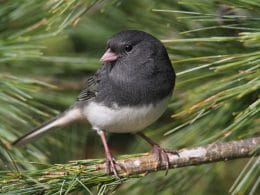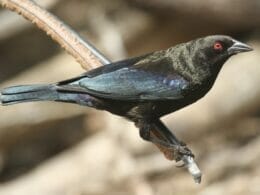Whether you know this incredible forest bird from its manic red crest, incessant drumming or the Woody Woodpecker cartoon, you must agree that it is a wonderful sight for anyone interested in nature. In this post we drum (pun intended) into the world of the most stunning woodpecker to find out how it lives, why it does what it does and whether it makes any other sounds.
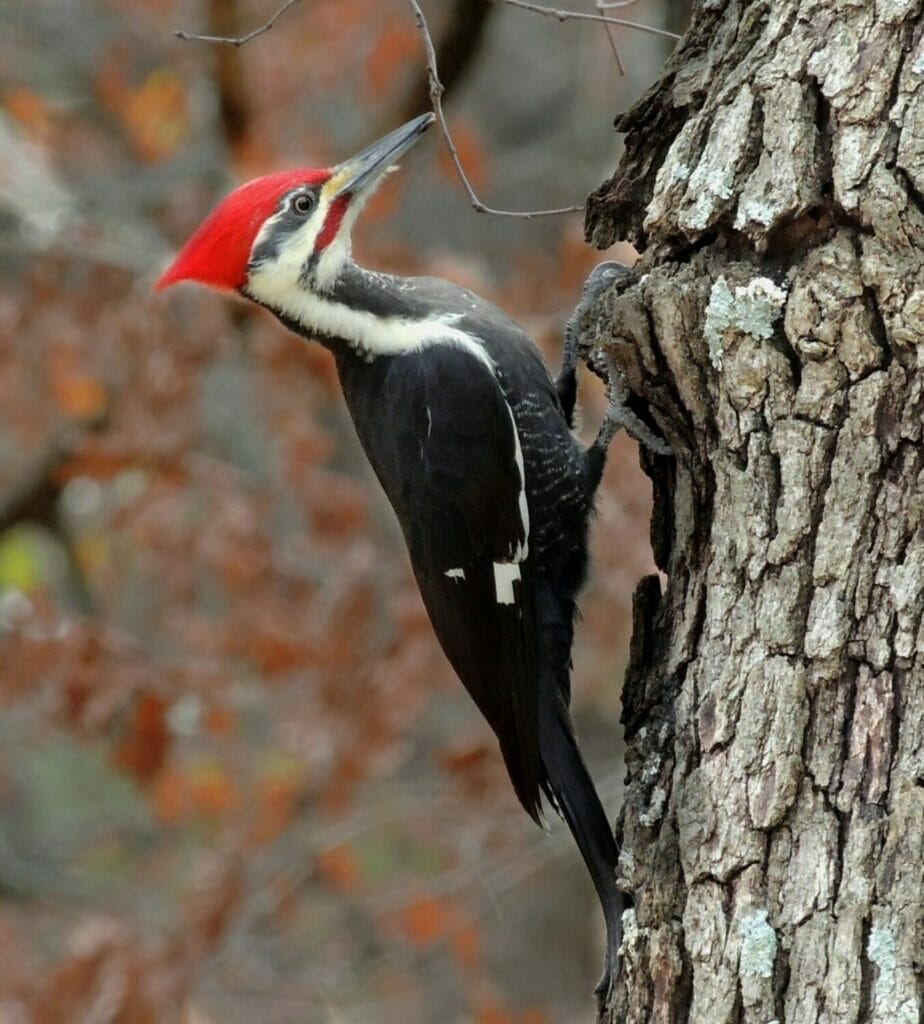
Pileated Woodpecker (Dryocopus pileatus) Facts
I have only caught glimpses of the Pileated Woodpecker in my birding journeys in the U.S. and was so amazed by them that I even forgot to take any photos! Possibly even more remarkable than the birds was the evidence of their presence after they themselves had been gone.

Ever been in a forest and wondered what creature made this kind of damage? It could well be the Pileated Woodpecker.
Identification
This is a bird for which you do not need a field guide to help you identify. It is a large forest bird that is mainly black on the body. White and black stripes run up the neck and onto the face. The bright crimson crest is unmistakable.

There are subtle differences between the male and female woodpecker. The female (pictured above) has a shorter crest and a black moustache. The male (pictured at top) has a very prominent crest and a red moustache. It may be difficult to separate them in the field. Juveniles have a short red crest as well.
Size
The male Pileated Woodpecker is 10 – 15% heavier than the female but this probably would not be evident in the field. However, their size is another give away – they are almost as large as a crow!
- Length: 15.8-19.3 in (40-49 cm)
- Weight: 8.8-12.3 oz (250-350 g)
- Wingspan: 26.0-29.5 in (66-75 cm)
Range
As you can see from the eBird Range Map below, the Pileated Woodpecker can be found across suitable habitat in the north (including Canada), west, east and far southeast of the U.S. The darkest spots represent concentrations which probably reflect heavily forested areas. It is not migratory and remains within range of suitable habitat.
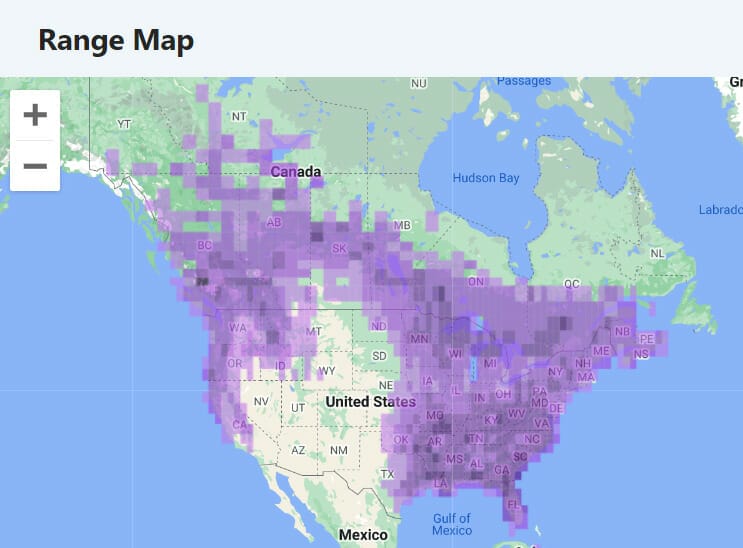
Habitat
The Pileated Woodpecker is a forest bird, no surprise there. It prefers deciduous, coniferous, or mixed forests. It needs to roost, hunt and nest in mature forests where trees have a large enough diameter. Once a territory is established by a pair, they will remain there and defend it vigorously.
Diet
The Pileated Woodpecker is a forager, looking underneath the top layer of bark primarily for ants. The full list of foods taken is:
- carpenter ants
- woodboring beetle larvae
- wild fruits
- nuts
- seeds
- budworm
- insects
- suet on bird feeders

Breeding
Once an appropriate nesting tree is chosen both sexes excavate it, with the male doing more of the work. They chip away at the tree to create a cavity and they will maintain that cavity even when there are nestlings in it.
When the nest is ready, the female will lay between 1 and 6 eggs with the average clutch size being 4. Incubation is for 14 – 18 days and both adults will sit on the eggs. The nestlings are fed by regurgitation where the adult inserts its bill into the mouth of the chick, who then sucks and with a jerking motion the food is expelled from the adult into the young bird.

The young birds are ready to fledge, leave the nest, at between 24 and 28 days old. They stay with the parents until they can confidently fly and even then, will follow the adults around for some time.
Sounds of the Pileated Woodpecker
So we all know that woodpeckers drum, but the Pileated has a range of other calls it uses with its mate, its chicks and to potential predators. Here are some of those sounds.
Drumming
The drumming of the Pileated Woodpecker is for several reasons. Firstly, they are looking for ants to eat. This is the most common reason why this bird pecks at bark. Next, they may be excavating a cavity for a nest and lastly, they may be establishing their territory. A sort of marker. Here are a couple of examples of the Pileated Woodpecker drumming call.
Call
This is a real bird call! The woodpecker may be sounding an alarm to its mate or warning off a predator.
Call in flight
This is a chuck-chucking call from a bird in flight and is a more gentle sound, probably from a bird to its mate as it approaches.
Foraging
This sound is a more dull drumming as a bird is foraging in the bark for ants.
Returning to the nest
This is the call of a Pileated Woodpecker returning to its nest.
Chicks in the nest
Laughing call
This could be my favorite call. It is not known what this bird is trying to communicate.
Conclusion
The Pileated Woodpecker is under threat by changing forest management to encourage younger trees that are unsuitable for it to thrive. This bird is essential for the success of local ecosystems as its hole provide nesting cavities for a range of other animals. While it is certainly a humorous and entertaining animal in appearance and behavior, it is also a very important native bird.
If you were surprised by the range of sounds of the Pileated Woodpecker, so was I! We tend to think of woodpeckers as drumming and nothing else. Good to know a bit more about them and I hope you enjoyed the post.

FAQ
There are lots of local and informal names for the Pileated Woodpecker. These include: wood hen, laughing woodpecker, carpenter bird and Indian hen.
Within their ranges as outlined in the post, they are locally common in mature forests with large and older trees.
It refers to the crest. The pileum is the top of a bird’s head from the bill to the nape. If that is covered with a crest, for example, the bird is ‘pileated’.




